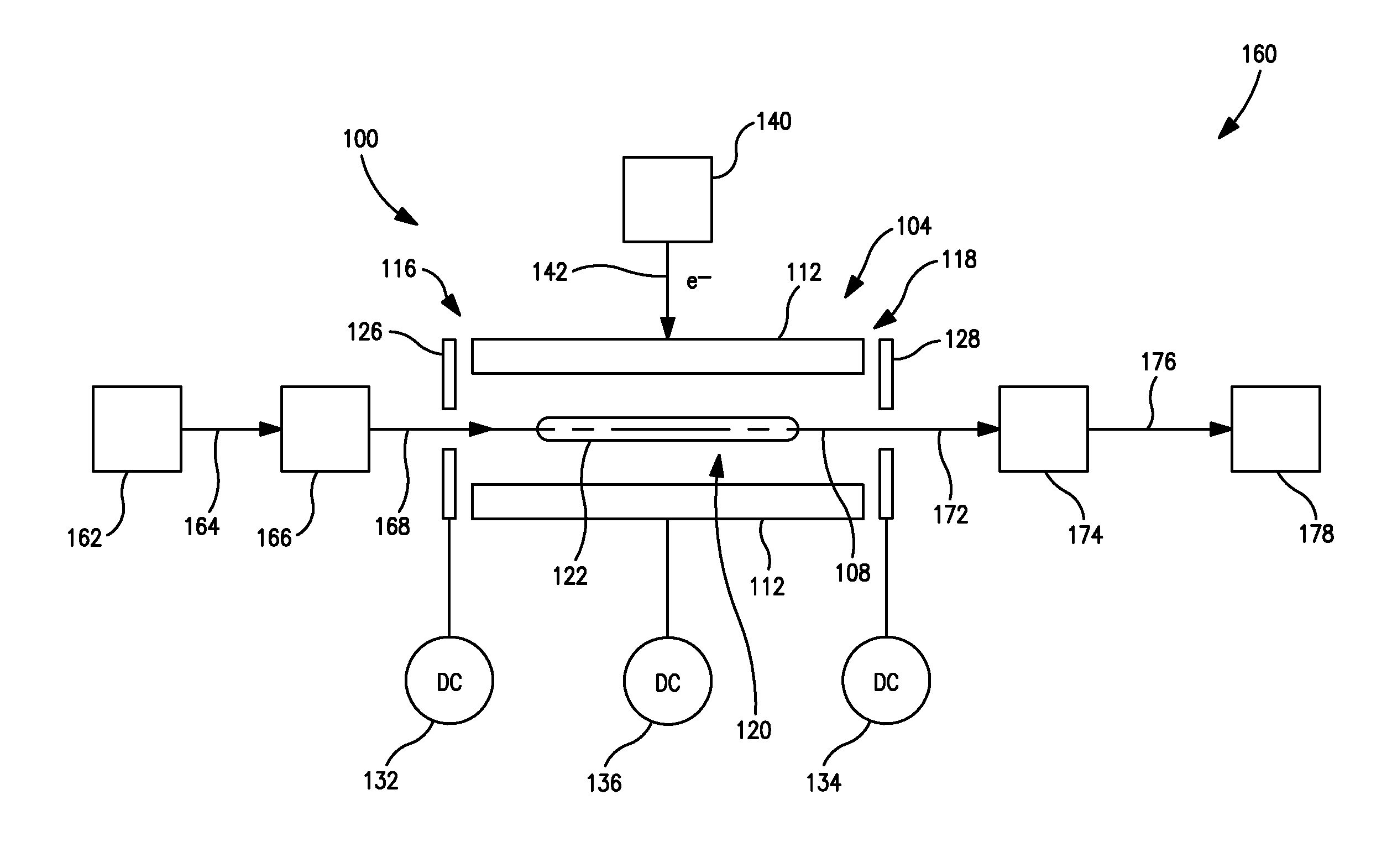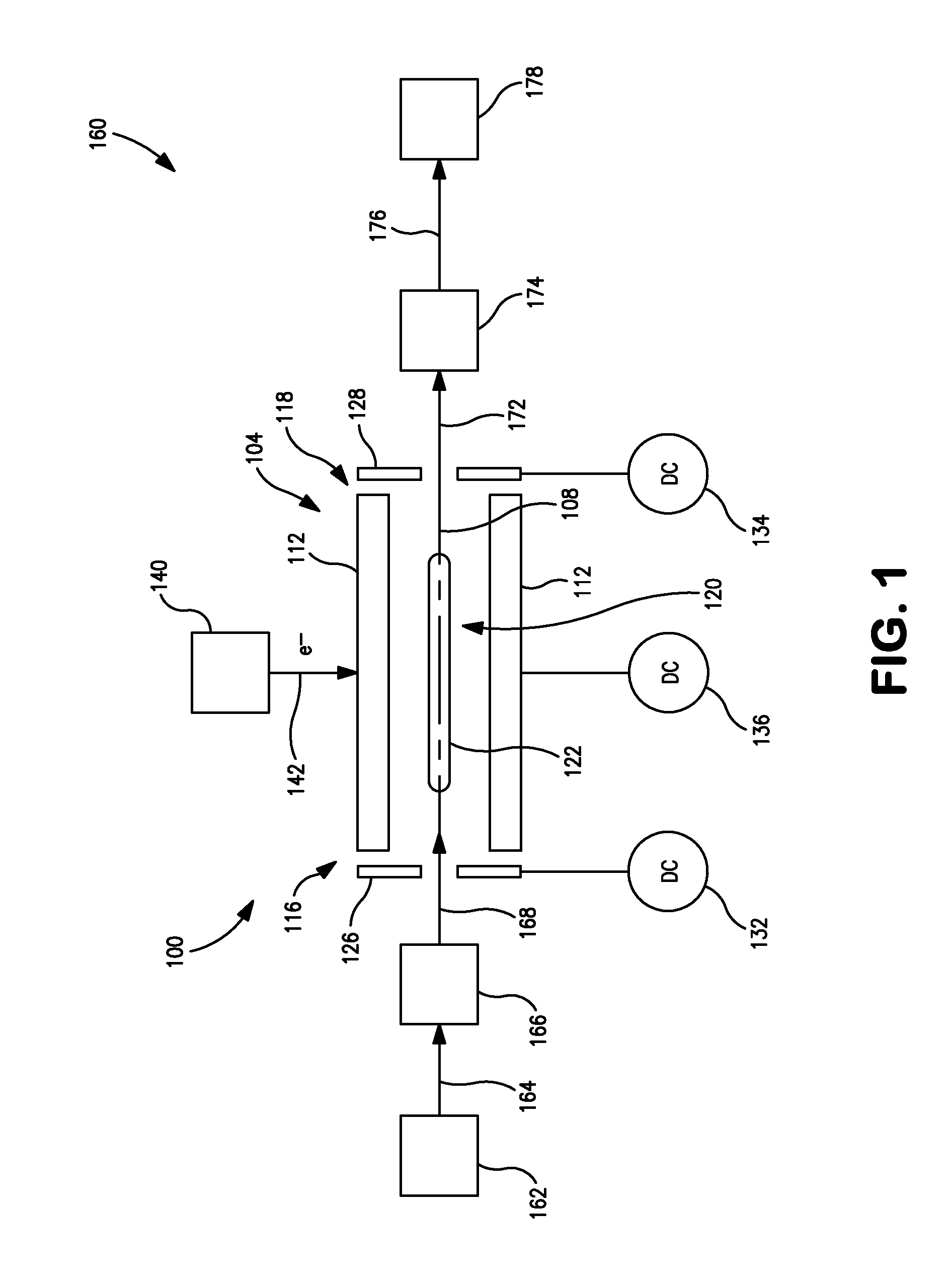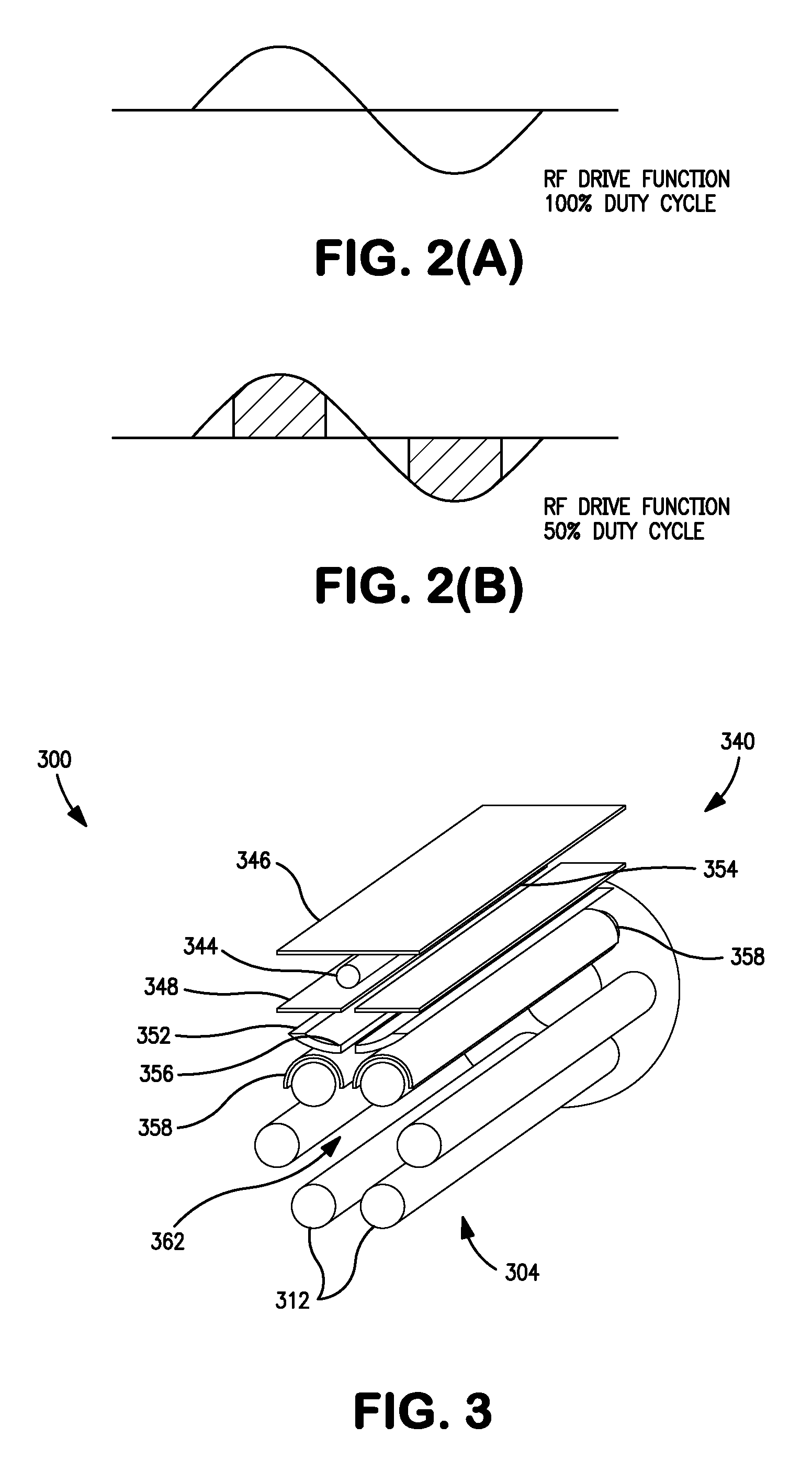Electron capture dissociation apparatus and related methods
a technology of electron capture and dissociation apparatus, which is applied in the direction of isotope separation, electric discharge tubes, particle separator tubes, etc., can solve the problems of high cost and technical complexity, inability to widely use penning trap-based instruments such as ftms, and inability to dissociate ions of large molecules. , to achieve the effect of low energy
- Summary
- Abstract
- Description
- Claims
- Application Information
AI Technical Summary
Benefits of technology
Problems solved by technology
Method used
Image
Examples
Embodiment Construction
[0030]The subject matter disclosed herein generally relates to fragmenting ions by electron capture dissociation (ECD) and hot electron capture dissociation (HECD), and associated ion processing. Examples of implementations of methods and related devices, apparatus, and / or systems are described in more detail below with reference to FIGS. 1-11. These examples are described at least in part in the context of mass spectrometry (MS). However, any process that involves ion fragmentation may fall within the scope of this disclosure.
[0031]FIG. 1 is a schematic view of an example of an electron capture dissociation (ECD) apparatus 100 according to certain implementations of the present disclosure. The ECD apparatus 100 includes a linear (2D) multipole ion guide 104 arranged about a central axis 108. The ion guide 104 includes a plurality of ion guide electrodes 112 extending between a first axial end 116 and an opposing second axial end 118. For clarity, only two ion guide electrodes 112 a...
PUM
 Login to View More
Login to View More Abstract
Description
Claims
Application Information
 Login to View More
Login to View More - R&D
- Intellectual Property
- Life Sciences
- Materials
- Tech Scout
- Unparalleled Data Quality
- Higher Quality Content
- 60% Fewer Hallucinations
Browse by: Latest US Patents, China's latest patents, Technical Efficacy Thesaurus, Application Domain, Technology Topic, Popular Technical Reports.
© 2025 PatSnap. All rights reserved.Legal|Privacy policy|Modern Slavery Act Transparency Statement|Sitemap|About US| Contact US: help@patsnap.com



